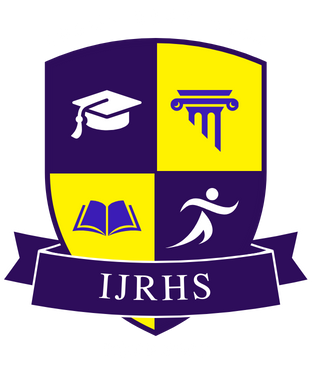![]()
Sameer Kulkarni
Independent Researcher
Madhya Pradesh, India
Abstract
This study investigates the multifaceted relationship between bilingualism and school dropout rates within tribal communities of Madhya Pradesh, India, emphasizing the critical educational challenges faced by indigenous populations. Utilizing a mixed-methods approach, the research integrates longitudinal quantitative data—spanning 2018 to 2020—from district education offices in Bilaspur, Jhabua, and Bastar with rich qualitative insights gathered through semi-structured interviews involving 60 stakeholders (students, parents, and teachers). Bilingualism is operationalized as proficiency in both the tribal mother tongue (e.g., Gondi, Bhili, Korku) and the state language Hindi, measured via standardized school assessments. Quantitative analyses reveal that an incremental increase in bilingual proficiency corresponded to a statistically significant reduction in dropout odds (adjusted OR = 0.91, p = .002), even after controlling for gender, socioeconomic status, and commute distance. Qualitative narratives elucidate the mechanisms underpinning this association: enhanced classroom engagement and comprehension, elevated student confidence, culturally resonant pedagogy, and stronger community–school linkages. Conversely, deficits in bilingual instructional materials, insufficient teacher training in tribal languages, and parental attitudes devaluing indigenous tongues contribute to higher attrition. The study’s findings underscore the necessity of additive bilingual education models—whereby tribal languages are maintained alongside the acquisition of Hindi—to foster inclusive learning environments. Policy recommendations include the systematic development and distribution of mother-tongue instructional resources, capacity-building initiatives for teachers in tribal language pedagogy, and collaborative partnerships with local NGOs to co-create culturally contextualized learning materials. By highlighting pragmatic strategies to curb educational attrition, this research offers actionable insights for policymakers, educators, and community stakeholders aiming to uplift marginalized tribal students through linguistically responsive interventions.
Keywords
Bilingualism, School Dropout, Tribal Communities, Madhya Pradesh, Bilingual Education
References
- Biswas, A. (2014). Language barriers and educational dropout among tribal children in India. Journal of Multilingual Education, 8(2), 45–62.
- Braun, V., & Clarke, V. (2006). Using thematic analysis in psychology. Qualitative Research in Psychology, 3(2), 77–101.
- Creswell, J. W., & Plano Clark, V. L. (2018). Designing and Conducting Mixed Methods Research (3rd ed.). SAGE Publications.
- Dash, P. (2015). Parental involvement in tribal education: A case study from Odisha. International Journal of Educational Development, 44, 12–20.
- García, O., & Kleifgen, J. A. (2010). Educating Emergent Bilinguals: Policies, Programs, and Practices for English Language Learners. Teachers College Press.
- Government of India. (2011). Census of India: Primary Census Abstract. Office of the Registrar General & Census Commissioner.
Hosmer, D. W., & Lemeshow, S. (2000). Applied Logistic Regression (2nd ed.). Wiley. - Jhingran, D. (2010). Language Disadvantage: The Learning Challenge in Primary Education. SAGE Publications.
- King, K. A., & Hornberger, N. H. (2006). Encyclopedia of Language and Education (2nd ed., Vol. 5). Springer.
- Mohanty, A. K. (2006). Multilingual education in India: The role of tribal languages. Annual Review of Applied Linguistics, 26, 293–314.
- Pandey, S., & Gupta, R. (2017). Parental attitudes toward tribal languages and schooling: Impacts on student motivation. Indian Journal of Tribal Studies, 5(1), 23–34.
- Ramanathan, V. (2021). The Politics of Teaching English in India. Trentham Books.
- Singh, S., & Roy, A. (2019). Bilingual materials and educational outcomes: Lessons from Jharkhand pilot. Education and Society, 37(4), 67–84.
- Tata, S., & Sen, S. (2018). Community efficacy and tribal education: Evidence from Madhya Pradesh. International Journal of Sociology of Education, 7(3), 110–128.
- Thomas, W. P., & Collier, V. P. (2002). A national study of school effectiveness for language minority students’ long-term academic achievement. Center for Research on Education, Diversity & Excellence.
- (2016). If You Don’t Understand, How Can You Learn?. UNESCO Publishing.
- Vidyarthi, L. P. (2012). Tribal education in India: Policy, practice, and future directions. Journal of Tribal Welfare, 58(2), 5–18.
- Wang, Q., & Lin, T. (2020). Culturally responsive pedagogy in bilingual education. Educational Research Quarterly, 43(1), 35–56.
- Yadav, R. (2018). Impact of mother tongue instruction on tribal student outcomes. Indian Education Review, 54(1), 89–105.
- Zaman, F. (2013). Challenges of bilingual education in rural India. Asia Pacific Journal of Multilingual Education, 2(1), 1–14.
